| Having trouble viewing this email? View it as a Web page.  | | | Editor: Kelly Sprute June 2, 2021 Making a Difference 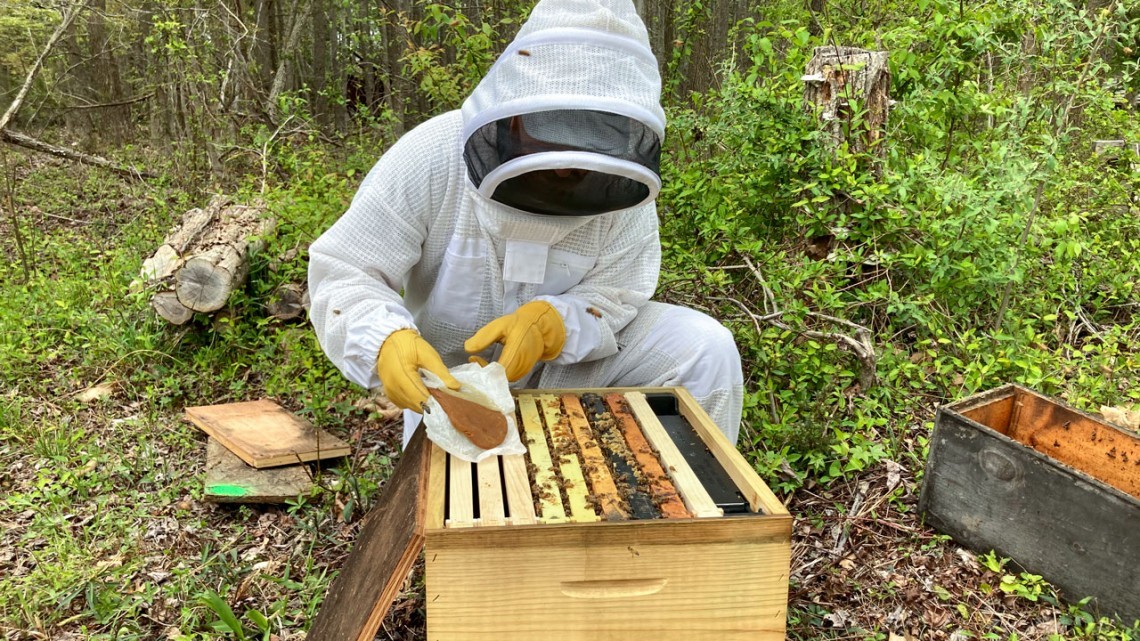 A Beemmunity employee, Abraham McCauley, image courtesy of Cornell University. Pollen-Sized Technology Protects Bees from Deadly Insecticides A Cornell University-developed technology provides beekeepers, consumers and farmers with an antidote for deadly pesticides which kill wild bees and cause beekeepers to lose a third of their hives on average every year. An early version of the technology detoxified a widely used group of insecticides called organophosphates. The antidote delivery method has now been adapted to effectively protect bees from all insecticides, and has inspired a new company, "Beemmunity." The company is running colony-scale trials this summer and plans to publicly launch its products in February 2022. Products include microparticle sponges in a dry sugar medium that can be added to pollen patties or sugar water, and consumer bee feeders. The research received funding from USDA's National Institute of Food and Agriculture. For more information, read the Cornell Chronicle article. | |  We have exciting news to share with our stakeholders this week: Project CAFÉ teams concluded their first six-month phase of implementing eight prioritized long-term initiatives. Through the commitment of NIFA employees and continued support from our stakeholders, each of these initiatives produced impactful outcomes. I'm devoting my column this week to sharing some of these accomplishments with you: - Grant portfolio data analysis:
The team completed a successful pilot of a new analytics tool that will allow for rapid analysis of grants. The result of this effort will be expediting our ability to answer complex questions regarding NIFA's portfolio. - NIFA's website:
The team published and maintained new or revised NIFA website content, including: NIFA's organizational structures, NPL points of contact information, our RFA calendar and a new, easy-to-use layout of our Program page. - NIFA's RFAs:
The team completed the research and analysis phase of its work. These efforts included interviewing external stakeholders and other grants-making federal agencies as well as conducting comprehensive analyses of RFAs issued by other granting agencies/organizations. - NIFA workshops and webinars:
The team identified eight new standardized webinars to help inform stakeholders about funding opportunities as well as NIFA's application and funding processes. - Panelist payments:
The team identified process improvements which will reduce average payment cycle times to 20-30 days. - Grant program implementation schedule:
The team developed a planning tool that defines target dates for each step of the granting process, from publication of the RFA to delivering funds to the awardees.
Team is now tracking actual performance for each step across all grant programs. Actual vs. planned timing is being reported using a centralized dashboard. - New hire training:
The team completed the curation and creation of new hire training materials for three key positions within NIFA.
- Panel manager hiring process:
The team identified, clarified and streamlined the roles and responsibilities throughout the panel manager hiring and extension process. The results will improve the experience and timelines to onboard or retain NIFA panel managers. Please continue to visit the Project CAFÉ Dashboard and follow the progress on these initiatives as they move forward into the next phase which, will conclude December 1, 2021. Dr. Carrie Castille
Director, National Institute of Food and Agriculture | 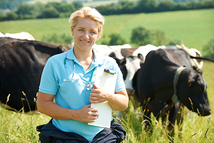 Tackling the U.S. Food Animal Veterinarian Shortage: NIFA's Veterinary Medicine Loan Repayment Program Food animal veterinarians are critical to maintaining a healthy, secure, and safe food supply. Today, there is a critical shortage of food animal veterinarians in both private and public practice, particularly in rural communities in the U.S. and insular areas. Food animal producers rely on veterinarians with expertise in animal medicine and surgery as well as advanced training in herd health, diagnostic medicine, epidemiology, public health, and food safety. One cause for this shortage is the high cost of professional veterinary medical education. The USDA'S National Institute of Food and Agriculture (NIFA) Veterinary Medicine Loan Repayment Program helps eligible veterinarians offset a significant portion of their debt. For more information, read this NIFA blog by guest author Danielle Farley, Social Science Specialist. Female veterinarian, courtesy of Getty Images. |  NIFA Invests in Digital Agriculture Technologies To propel Midwest farming practices to the next generation of digital agriculture technologies, the National Science Foundation's Cyber Physical Systems program and the USDA's National Institute of Food and Agriculture recently awarded a 5-year, $7 million grant to researchers led by engineers from Iowa State University and the University of Illinois Urbana-Champaign. The award launches the COALESCE—short for COntext Aware LEarning for Sustainable CybEr-agriculture systems—Cyber-Physical System, which will focus on operations of farm managing like sensing, modeling, and decision-making at the level of individual crops. In other words, by focusing on crop stressors at the individual levels, farmers can focus their resources and attention; thus, reducing the cost of labor, use of crop inputs such as herbicides and fertilizers, and water. For more information, read the NIFA press release. Aerial view of green field; image courtesy of Gabriele Tirelli. |  Memorial Day: NIFA Salutes U.S. Military Community Each year on the last Monday of May, Americans honor U.S. Armed Forces members who have died in the performance of their service to our country. Memorial Day is a federal holiday to remember our fallen heroes. It's also an appropriate time to reflect on how we can support our military community every day. USDA's National Institute of Food and Agriculture salutes our military members, veterans, and military families through numerous programs and services. For more information, read the NIFA blog. Memorial Day graphic, courtesy of Getty Images. |  Preparing for Another Active Hurricane and Storm Season Climate experts are predicting another busy and dangerous Atlantic storm season. USDA's Gary Crawford talks with Acting NOAA Administrator Ben Friedman and Administrator of the Federal Emergency Management Agency Deanne Criswell about the latest update on the storm forecasts and what you can do to prepare for any weather disaster. For more information, listen to this USDA broadcast. Sever storm warning sign, courtesy of Getty Images. | 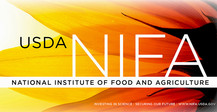 NIFA Career Opportunities We are hiring! Remember to check out NIFA's Career Opportunities webpage, where there is a direct link to all open positions. You can also explore NIFA jobs at the USAjobs.gov website. Current openings in Kansas City, Missouri: Biological Science Specialist (Data Analyst) (GS -13)
Closing Date: 06/10/2021 |  Forging the Future of Food Imagine you're at a family barbecue and you've just bitten into a fat, juicy burger. As you savor the rich, familiar flavor, the host informs you that it's made not of beef, but of peas, or fava, or seaweed. Now imagine that it tastes exactly like a real beef burger, and you know that it's far better for the environment and doesn't require harming any animals. Meat consumption is at an all-time high globally, and is projected to double by 2050, according to the United Nations. At the same time, there is growing consciousness of the environmental ills associated with meat and dairy production, including environmental degradation, antibiotic resistance, and greenhouse gas emissions driving climate change. The University of Massachusetts Amherst (UMass) Department of Food Science sees plant-based foods as one of the most important strategies for combating the adverse effects of climate change and is strongly committed to carrying out innovative research in this area. Research is already well underway at UMass, with funding from USDA's National Institute of Food and Agriculture and the Good Food Institute. For more information, read this UMass article. David Julian McClements, courtesy of the University of Massachusetts Amherst. | 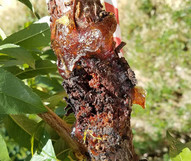 Fungal Biologists Fighting Peach Tree-Killing Pathogen Many Coloradans look forward to the first, juicy bite of a Palisade peach every summer. Demand for the fruit never runs dry, but the state's $40 million peach industry is under increasing threat from an insidious tree-killing pathogen. Researchers in Colorado State University's College of Agricultural Sciences aim to turn the tide against the fungal pathogen Cytospora, which for decades has affected peach orchards across the Western Slope, cutting the lifespans of trees in half and costing farmers millions of dollars each year. Studies will help researchers to better understand the molecular biology that governs this harmful pathogen, to devise an arsenal of best practices to ward off infections, and help growers stay in the peach business. USDA's National Institute of Food and Agriculture supports this research. For more information, read the Colorado State University article. Cytospora pathogen on a peach tree, courtesy of Colorado State University. | 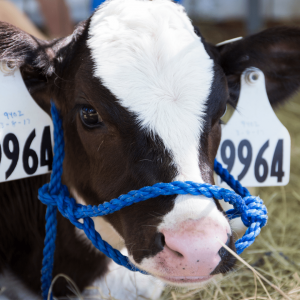 University of Florida's Calf Buddy Study Florida is the largest dairy-producing state in the Southeast. Florida has about 75 licensed dairy farms with just over 100,000 cows and maybe around 60,000 young calves and heifers. The University of Florida Institute of Food and Agricultural Sciences researchers are looking at the effects of different housing styles for young calves, or housing calves individually in pairs, and also in larger social groups during the pre-weaning period. As calves develop, they experience a lot of transitions. How an animal responds to transitions and copes with those changes has implications for its welfare. Funding support for this research project is from USDA National Institute of Food and Agriculture. For more information, read the University of Florida article. Florida dairy calf, courtesy of the University of Florida. | 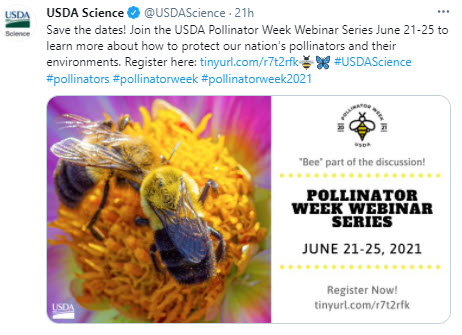 | | | NIFA's mission is to invest in and advance agricultural research, education, and extension that solve societal challenges. NIFA's investments in transformative science directly support the long-term prosperity and global preeminence of U.S. agriculture. Keep informed about NIFA, USDA, our land-grant and non-land-grant university partners, and stakeholders with the NIFA Update. Read past issues online, sign up for email updates or follow us on Twitter @USDA_NIFA, #NIFAImpacts or LinkedIn @usda-nifa. If you wish to submit a news item or information, send an email to NIFAUpdate. USDA is an equal opportunity lender, provider, and employer. | | | |

No comments:
Post a Comment